This brief history of the Church of the Brethren mission in Nigeria, and the emergence of Ekklesiyar Yan’uwa a Nigeria (EYN, the Church of the Brethren in Nigeria), offers a glimpse into how the Brethren mission grew from a small beginning in 1923 into a large indigenous African denomination. Corrections and additions to this history and timeline are welcomed; contact cobnews@brethren.org.
The early years
Early Nigerian Brethren leaders
CBM in its heyday
CBM programs
A developing mission philosophy
The Leprosarium
Lassa Fever
Emergence of Ekklesiyar Yan’uwa a Nigeria
Brethren in Nigeria in the 21st century
Source documents
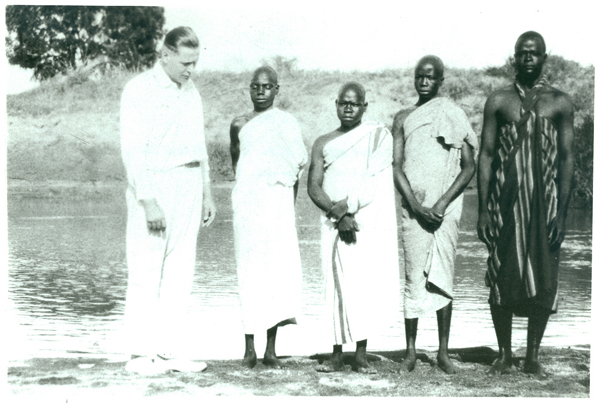
The early years
The Church of the Brethren Mission in Nigeria (CBM) was founded in 1923 by two American Brethren: H. Stover Kulp and Albert D. Helser. Permission for Kulp and Helser to go to Africa as missionaries was given by the Church of the Brethren General Mission Board in June 1922.
Eventually they gained permission to settle in Garkida, a small village at the time located in Bornu Province. They began their work assisted by three Nigerian men: Garba from Zaria, the cook John who was from the Igbo tribe in the southeast, and Mr. Danboyi of the Pabir people who was their translator.
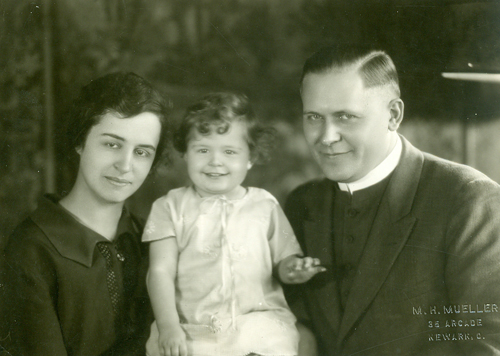
In March 1923, Helser and Kulp started building two houses in Garkida. They began the missionary effort with medical work, and teaching people to read and write. In October 1923 Ruth Royer Kulp and Lola B. Helser joined their husbands, traveling from the United States by boat, and then to the north of Nigeria by truck and bicycle.
In 1924 Dr. Homer L. and Marguerite Burke joined the medical work in Garkida and started a dispensary. Dr. Burke was the first physician in the mission, but the Burkes were just the first of many more American Brethren to join in the mission in Nigeria.
The first communion service of the Church of the Brethren in Nigeria was held April 17, 1924. At the time the Kulps also were working at learning the local language, Bura, and were writing some books in Bura including a Bura Primer, Bura Hymn Book, and Bura New Testament.
After a furlough in the US and Europe, Kulp married Christina Masterton. Originally from Scotland, she had served as a missionary in Nyasaland and Rhodesia. They were married Dec. 8, 1926, and came back to Nigeria in 1927 where they went to Dille to work with the Margi tribe in Adamawa Province. In Dille, in 1928, Pilesar Sawa started a small school, holding classes for boys in the mornings.
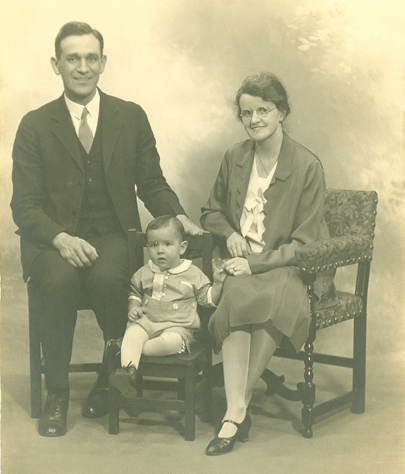
The first baptisms of Nigerian believers into the Church of the Brethren took place in 1927. Five people had planned to be baptized, but one got sick and so the number baptized was four. Among them were Risku Zidiku Madziga and Pilasar Mshelsawa (Sawa), who are recognized and honored as the first Nigerian Brethren.
In 1928, the Kulps moved to Lassa and started the mission station there, where Pilasar Sawa and Risku Madziga became the first teachers. The first school in Lassa was started in 1929 offering classes for the Bura people in the mornings, and classes for the Margi people in the evenings after farmwork was done.
Later the Kulps also worked at Marama, Wandali, and Shafa. Their son, Philip, also worked in the Nigeria mission at Waka. Christina Kulp died at Garkida in 1952. H. Stover Kulp returned to the US in 1964 where he died on Oct. 12, 1964.
A major institution of the mission, the Leprosarium at Virgwi, first called a “leper colony,” was founded in 1929 by American Brethren physician R.L. Robertson, who began work at Virgwi on Sept. 7, 1929. He died of yellow fever in Lagos just two years later, in 1931. However, the work continued and the institution grew and gained international recognition for its work in the treatment of leprosy, or Hansen’s Disease.
Early Nigerian Brethren leaders
The decision to begin training Nigerian pastors came in 1947, and pastor training began in 1950. Up to that point, Nigerian leaders had served in congregations only as officers of the churches. After two years at the Pastor’s Training School in Chibuk (also often spelled Chibok), the first group graduated in April 1952: Hamnu Ngganjiwa (ordained in 1958) became a counselor in the Wandali church; Madu B. Mshelia Marama (ordained in 1955) became pastor of the Marama church; Thlama Wakawa (ordained in 1956) became pastor of the Garkida church; M. Gwanu; M. Karbam; Mai-Sule Biu (ordained in 1956) became the first elder in the Nigerian church and then served as chairman of the Majalisa or annual meeting for 15 years, later holding other key leadership roles in Lardin Gabas and among Nigerian ecumenical organizations.
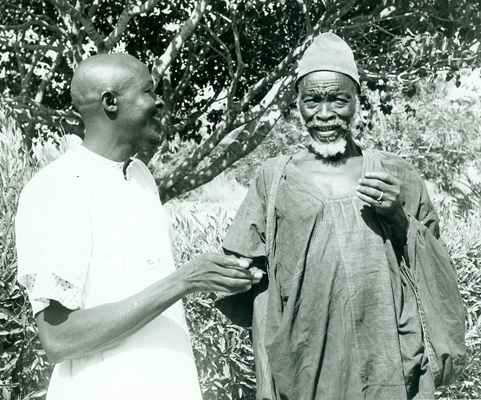
At this point, the Nigerian church had grown to some 94 organized congregations, and it was decided that annual meetings called Majalisas should be held. Each congregation sent representatives according to their size of membership. The Majalisa was at first led by a mix of American mission leaders and Nigerian church leaders. The first Nigerian chairman of the Majalisa was Pastor Madu, then Pastor Karbam. Mai Sule Biu then served as chairman for 15 years. The first Nigerian leader to become secretary was Ngamariju Mamza.
Lardin Gabas (1972 map)
Click for larger version of the 1972 Lardin Gabas map
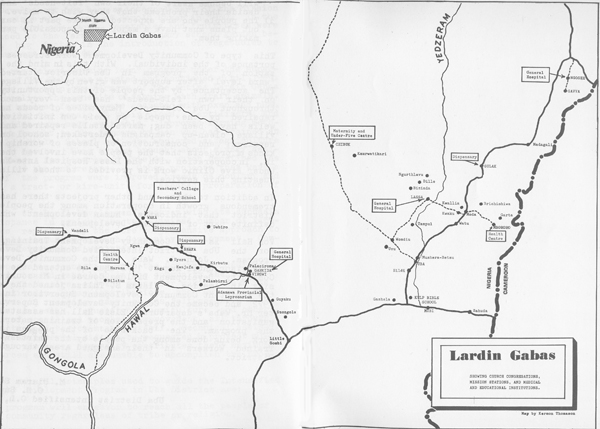
An abbreviated timeline
1922– The Church of the Brethren General Mission Board gave permission for H. Stover Kulp and Dr. Albert D. Helser to go to Africa as missionaries. The two men arrived in Lagos, Nigeria, on Dec. 29, 1922.
1923– Kulp and Helser founded the Church of the Brethren mission in Nigeria (CBM) when they received permission to settle in the village of Garkida, and began mission work there. In October, Ruth Royer Kulp and Lola B. Helser joined their husbands in Garkida.
1924– The first communion service of the Church of the Brethren in Nigeria was held April 17. In June, tragedy struck the new mission with the death of Ruth Kulp and her newborn baby. Also in 1924, Dr. Homer L. and Marguerite Burke were the first of many more Brethren missionaries to join the work in Nigeria. They started a medical dispensary in Garkida. Also, boys’ and girls’ schools were started in Garkida.
1926– Official opening of primary school in Garkida.
1927– The first four Nigerian believers were baptized into the Church of the Brethren. Kulp returned to Nigeria with his second wife, Christina, and started work in Dille, in Adamawa Province, but then had to move to Lassa because of a lack of water in Dille.
1928– The mission station in Lassa opened. In Dille, Pilesar Sawa started teaching classes for boys.
1929– The first school in Lassa was started. By 1935, Lassa Elementary School was fully established.
1930– The mission station in Marama opened. Also, CBM’s rural development program began with the work of Harold Royer.
1931– The Leprosarium in Garkida opened. Also, the primary school in Maram opened.
1932– The teacher training school opened at Garkida.
Late 1930s to mid-1940s– beginning of teaching and school in Chibok, often known as Chibuk. Sources differ as to the start of the mission there. One source cited 1937-38 as the dates of the building of the first mission houses in Chibuk, which gave 1941 as the official opening of the Chibuk mission. Another source said 1947 is the date for the official opening of the primary school in Chibuk.
Early 1940s– Nigerian Brethren began to open Shafa village to the gospel.
1942-44– The mission elementary schools were shut down for a short period, and then reopened.
1942– Hillcrest School was started in Jos, initially as a school for the children of mission workers using the American education system. The school quickly became a cooperative effort of several mission organizations, and began accepting Nigerians and other expatriate children as students.
1944– The first missionaries from the Brethren Church (the Ashland Brethren) became involved in Nigeria; a cooperative arrangement with the Church of the Brethren mission was established in 1948.
1946– The mission station at Wandali opened.
1947– The decision was made to train Nigerian pastors. Previously Nigerian Brethren could serve only as officers in their churches.
1948– The mission station at Gulak opened, and the primary school there was started.
1949– The primary school at Wandali opened.
>> Next